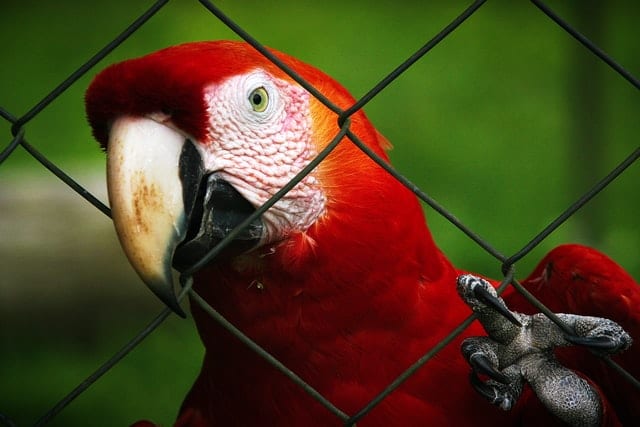The Reality Gap that Leaders must Bridge – Moving from Discussion to Dialogue
What may look like a people problem is often an environment, situation, or system problem. Organisations are brimming with misdiagnosed problems.
Just as a caged bird is so close to the bars that it does not know it is in a cage, we too do not recognise the structures that surround us. Rather we just find ourselves conditioned to behave in certain ways.
How do we pierce this conditioning to create a better connection with reality?
Unlike birds trapped in cages, the nature of structure in human systems is more subtle because we are part of the structure. To carry the metaphor forward, rather than being made of steel, our cage is made of our beliefs and assumptions.
This means that we have the agency to alter the structures within which we operate. However, in many cases we are not conscious of the structures we create for ourselves. By implication neither are we conscious or our agency to change them. We cannot change what we do not see.
How do we get into this invisible trap?
In organisations, we have management teams that are supposed to sort out various complex and important cross-functional issues.
Instead, many organisational teams engage in turf wars, astutely dancing around anything that could look bad personally while simultaneously pretending to be diligently focused on advancing the team’s collective strategy.
To maintain this disconnection from reality, disagreements are squelched, individuals with reservations don’t state them publicly and joint decisions become either convoluted compromises to cater for everyone’s opinion or a reflection of one person’s view that is foisted on the group.
When the repression of natural debate and healthy conflict becomes too much to contain, disagreements erupt in a manner that is blame-seeking. We polarise between positions. The culmination is a failure to create the time and space needed for reality to be seen. Our behaviour becomes a perfect reality avoidance mechanism.
Harvard’s Chris Argyris has observed:
“Most management teams break down under pressure. The team may function quite well with routine issues. But when they confront complex issues that may be embarrassing or threatening, the ‘teamness’ seems to go to pot”.
Argyris explains that many management teams experience the process of collective inquiry as threatening. We are trained to be smart, to know the answer and organisations reinforce this training by rewarding people who excel at articulating their opinions in simple and clear-cut terms. We laud those who have solutions to urgent problems; not those who raise difficult questions about the organisation’s direction of travel.
We hide (and hide from) our uncertainty and ignorance by building a cage to protect ourselves from feeling uncertain or ignorant. The cage blocks our understanding and impedes our learning. The consequence of this is what Argyris calls ‘skilled incompetence’; teams that are full of people who excel at keeping themselves from connecting with a wider reality.
How do we escape the cage?
To escape we need to nurture the capacity for meaningful conversations.

Now that I see the cage, how do I escape?
These are conversations that start at a ‘point zero’. According to Aristotle ‘well begun is halfway done’. Beginning a conversation well is to start at ‘point zero’; not at some artificial mid-point where a plethora of assumptions, individual beliefs and perceptions curtail the scope of inquiry and distort reality.
In writing about the ‘conventional discussion process’; Deborah Flick notes that it is built on a series of assumptions that place a premium on being right, persuading others, winning, and finding the right answer.
This contrasts sharply with David Bohm’s description of dialogue where “a group of people can explore the individual and collective presuppositions, ideas, beliefs, and feelings that subtly control their interactions.” In other words – they bring the cage into their collective field of vision and make it part of the conversation. You cannot escape from that which you don’t notice.
Moving from discussion to dialogue is the cultural shift that we need to make. For many of us it will be difficult because it requires letting go of something that we have been trained to hold dear – and that is the need to be right. We must learn to listen without reloading.
While dialogue is not about being right, neither is it about being wrong. Rather it is about suspending judgement and exploring ideas in an atmosphere in which exploration itself is both the journey and the outcome. The process is the solution.
In dialogue I can say what is on my mind without fearing that others are judging me, finding fault with my ideas, or forming adverse opinions of me. Therefore, trust is both a prerequisite and an outcome of dialogue. There is no imposed consensus, nor is there any attempt to avoid conflict. In this environment – it is OK to see reality and to talk about it.
Great dialogue gives everything a place, including difficulty. This radical permission frees us and change flows.
Let us work for liberty
I believe that conventional discussion, planning, reporting, and analysis routines are useful only for managing detail. The discussion method is not equipped to deal with the dynamic complexity of the world we live in today – a world marked by technological advance, pandemics, climate change and social dissonance.
We need to move from a discussion culture that seeks to polarise and compartmentalise to a dialogue culture that empowers people to hold their vision while also connecting with what reality is offering.
The Originize Project
This article is inspired by my participation in the Originize Project. Orginize provides a space for leaders to have meaningful conversations that connect with reality.
Read more about Reality Groups.
Discover more about what I do.
Contact me for a conversation.

Share this on...